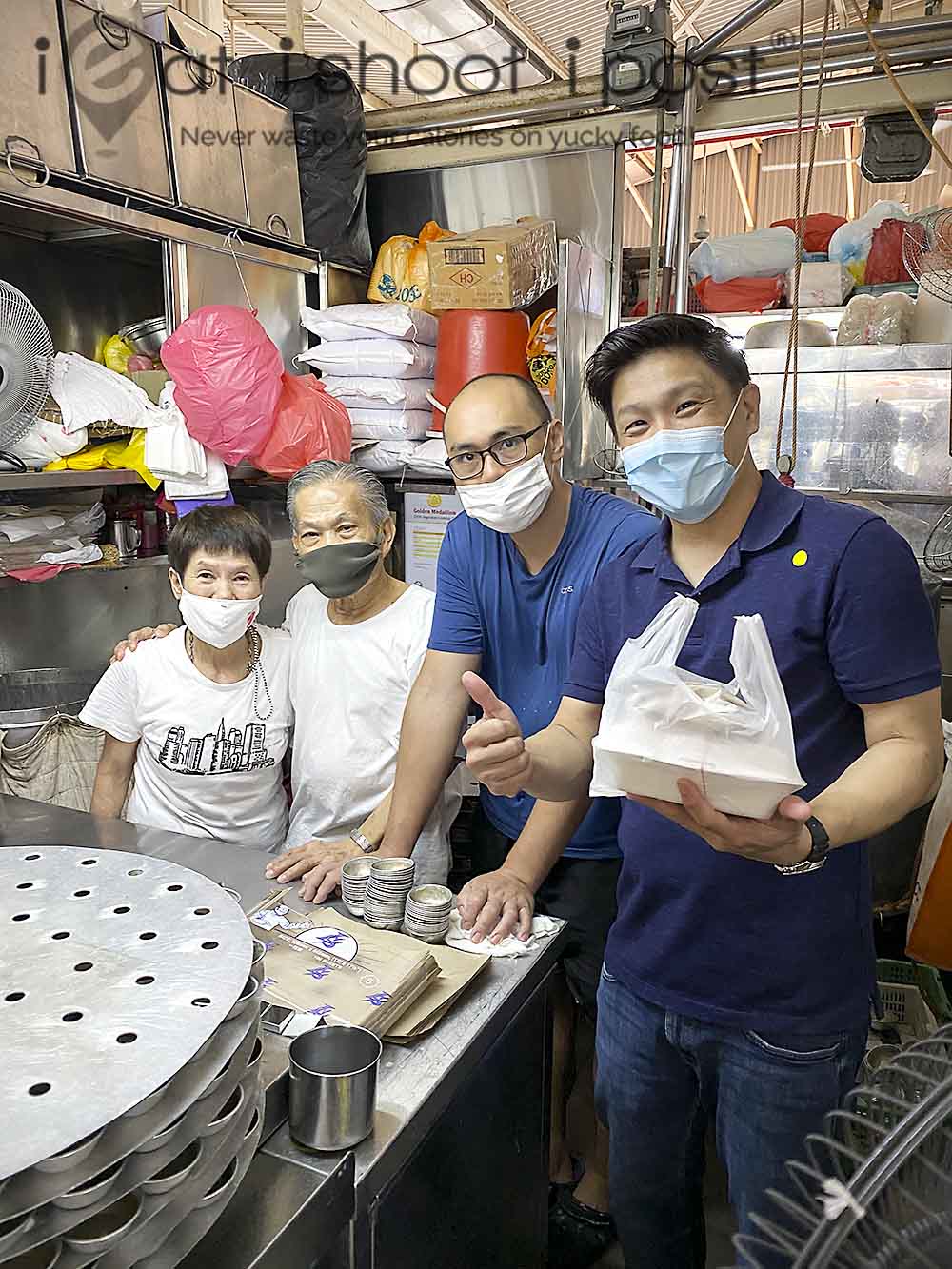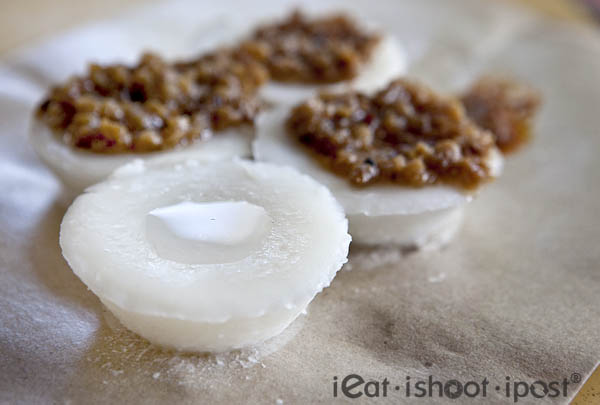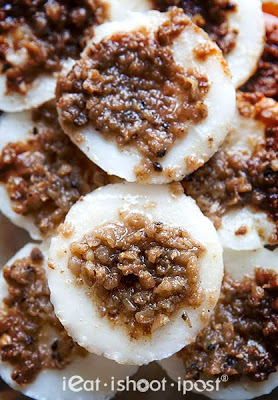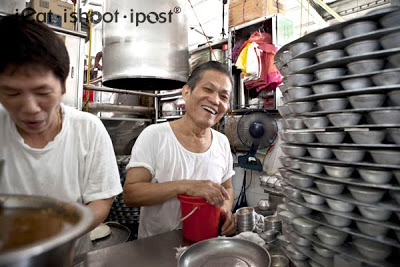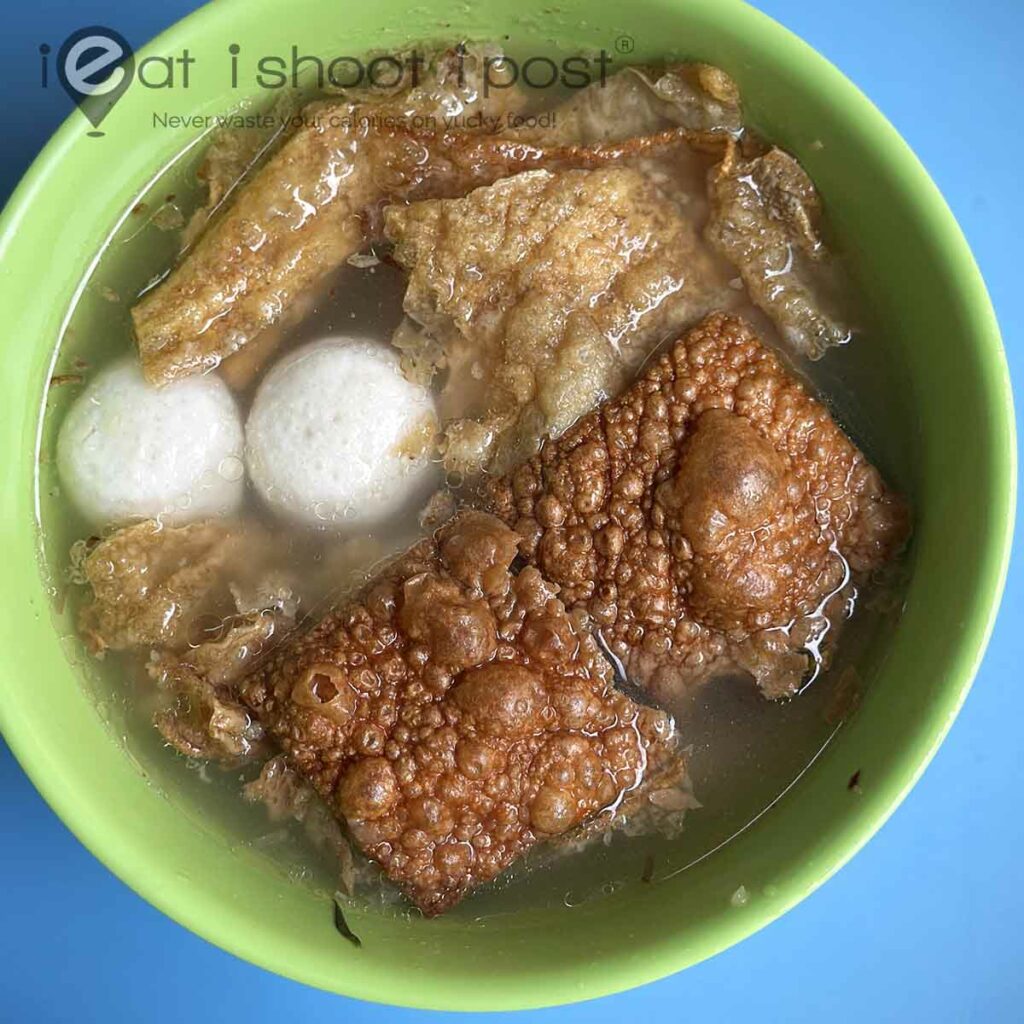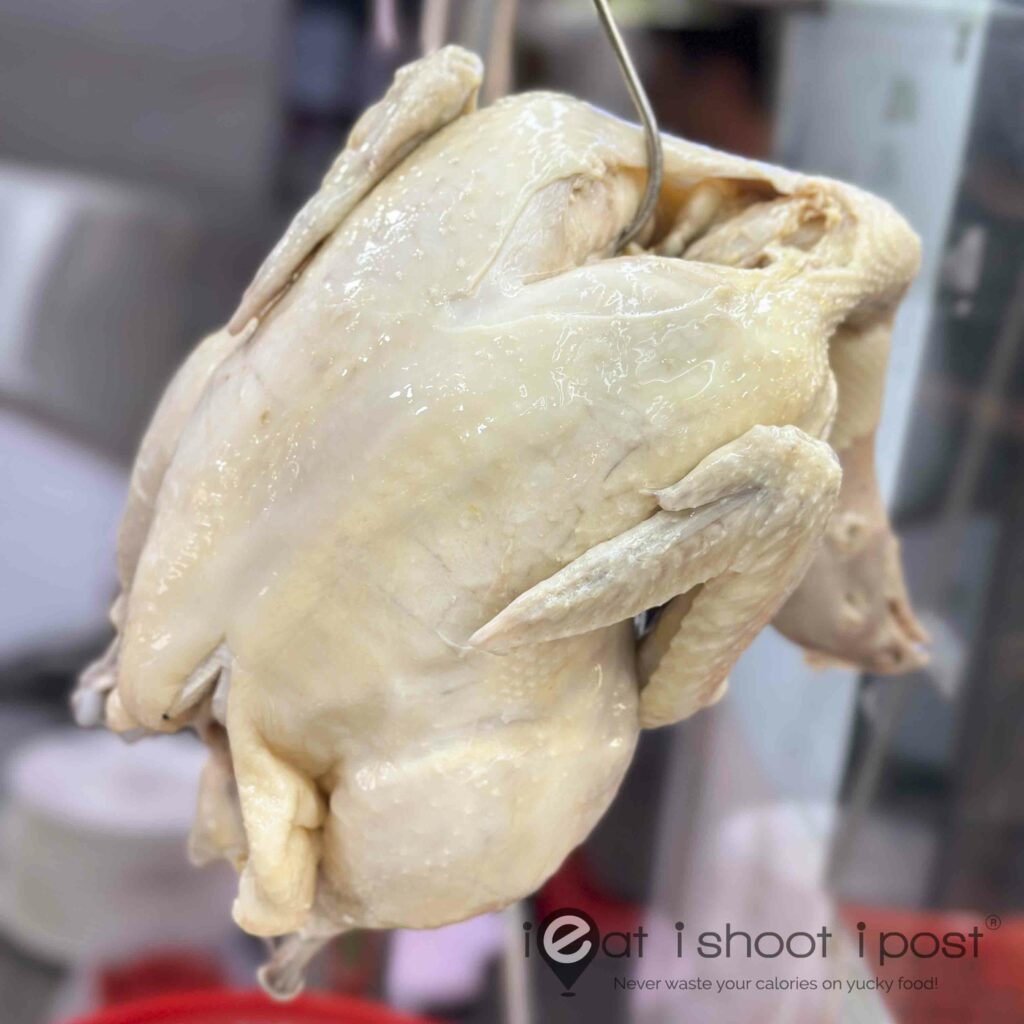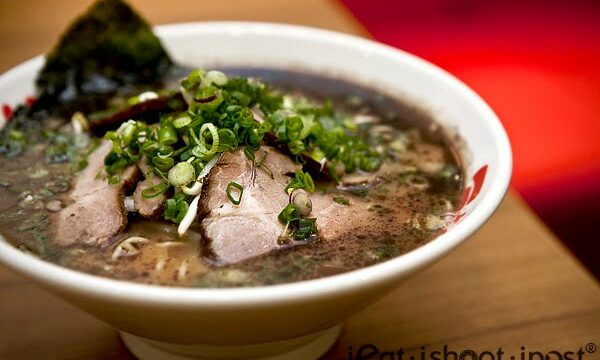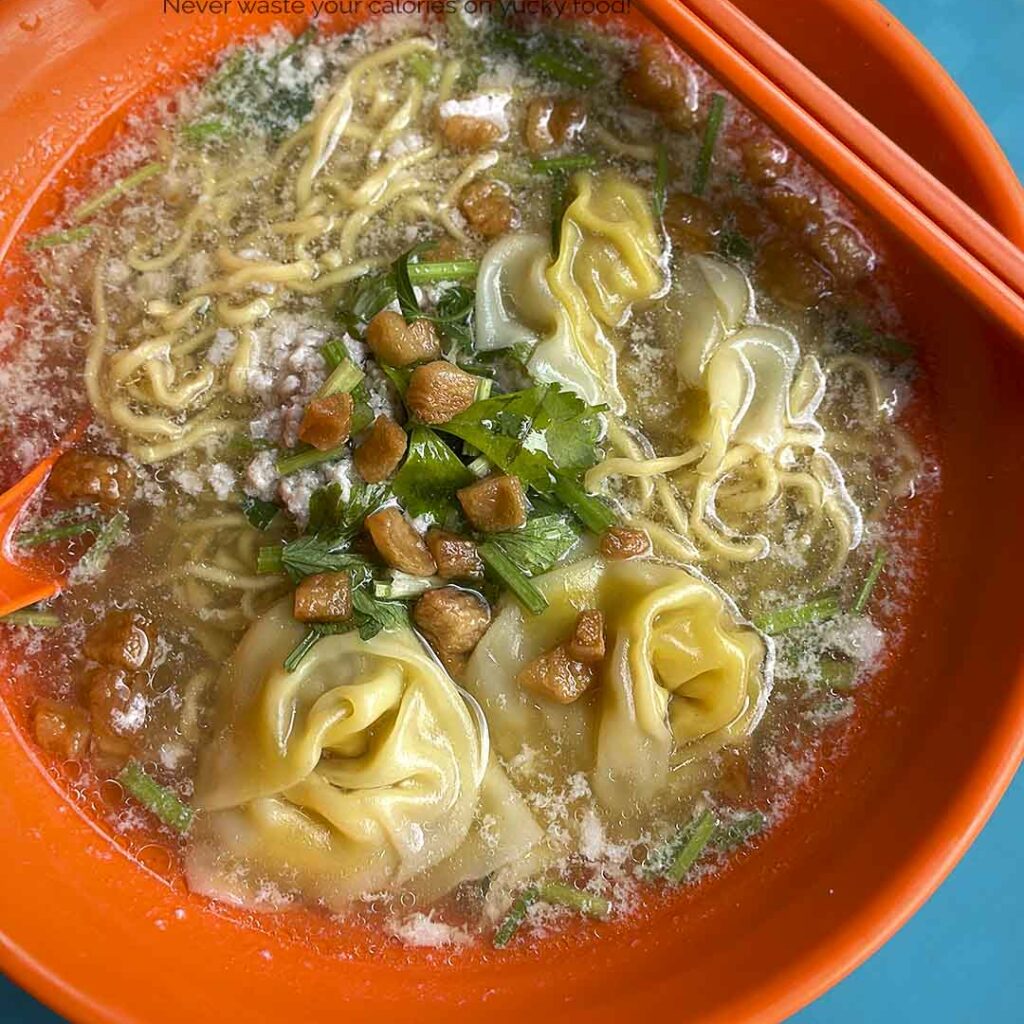Updated 19 Dec 2020
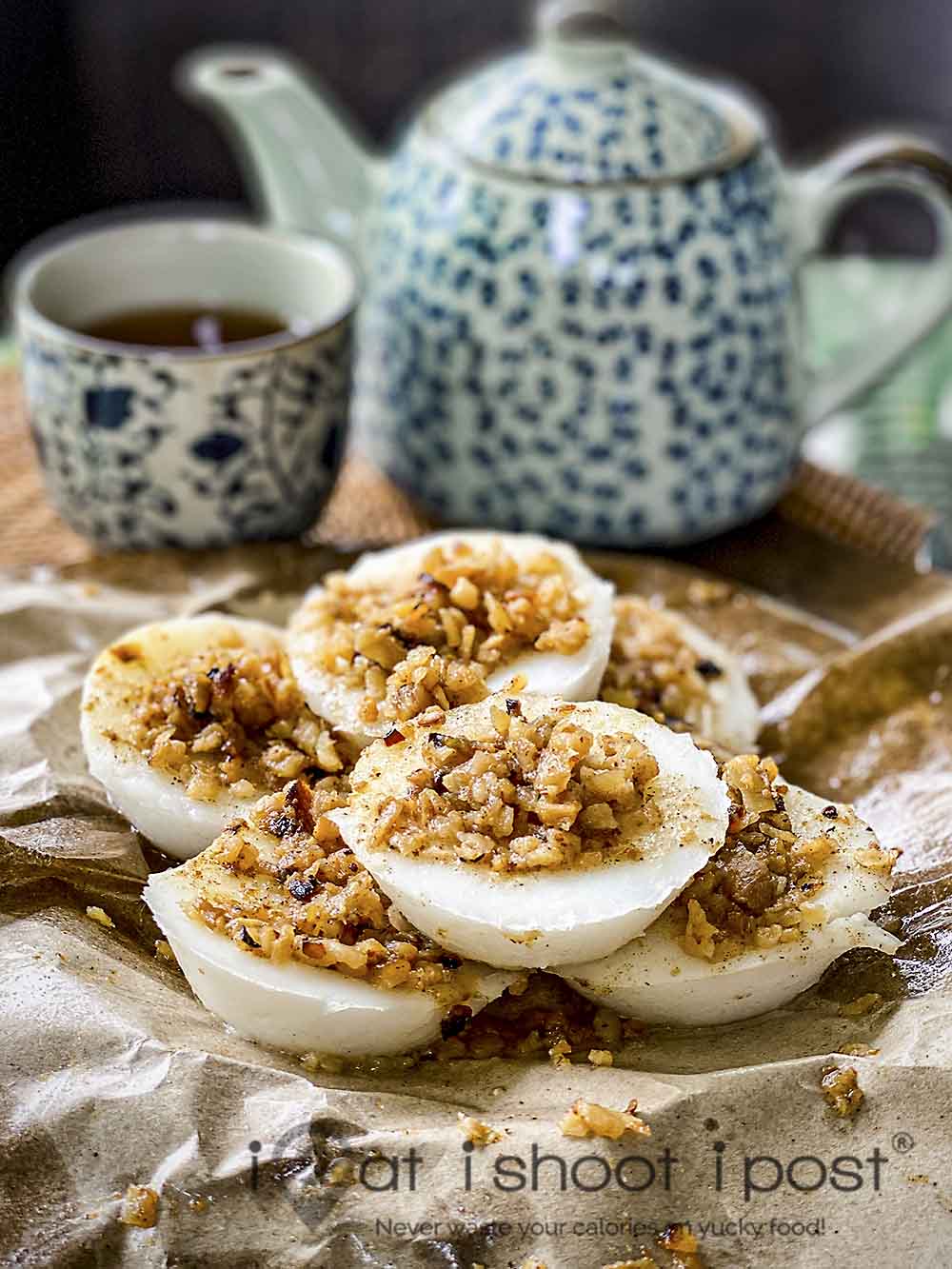
“Chwee” refers to the puddle of water on a freshly steamed Chwee Kueh
I have long wondered why Chwee Kueh was called Chwee Kueh (Water Cake). I had assumed that just as carrot cake is known as carrot cake because it contains carrot, Chwee Kueh must be called Chwee Kueh because it contains water and milled rice. Well, it turns out that it is called Chwee Kueh because there is a little dimple at the middle of the Chwee Kueh where water would collect after steaming. So it is called Chwee Kueh because of this little puddle of water! Asoh!
Our version of Chwee Kueh is uniquely Singaporean. This is a Teochew dish which our forefathers modified when they arrived in Singapore. You can find Chwee Kueh in Swatow today, but their version does not have the Chye Poh (preserved radish) that we are familiar with. Instead, they top theirs with a fried shallot oil (Chang Ju Lar). In Malaysia, they do have their own version, but theirs is a dessert plate sized version compared to our sauce plate sized one.
Dec 2020 update: 4 for $2. 2010 prices: 4 for $1.20
In the good old days, they used to make Chwee Kueh in clay molds and they used to mill their own rice to make the cake. Uncle tells me that in those days, the Chwee Kueh was so transparent that you could see the bottom of the mold from the top of the Kueh. There is a lot of skill involved in making the Kueh. It isn’t as easy as just mixing rice flour and water and steaming the paste. The experienced Chwee Kueh hawker would always source for old rice to make Chwee Kueh as it has greater ability to absorb water and is more fragrant. The amount of water added to the flour will also depend on whether it is a rainy day as humidity is also a factor in determining the outcome of the Kueh.
Pushcart days in the 60’s – uncle is hidden behind his older brother
The familiar aluminium molds were introduced in the 70’s when the NEA deemed the clay molds unsanitary because they sometimes have cracks that serve as a harbour for bacteria. Of course, Uncle still feels that the clay molds made the Kueh more fragrant, but he is also grateful for the switch to aluminium molds because he used to experience breakages almost everyday.
The topping for the Chwee Kueh here is different from the toppings which I have eaten elsewhere. According to Uncle, this is the traditional recipe for Chwee Kueh topping. It contains garlic, Pork Lard and Chye Poh. He doesn’t add sesame seeds or sugar in his recipe. So this Chwee Kueh is Kiam Pang (salty savoury) rather sweet and savoury which is what is commonly sold elsewhere. It takes a bit of getting used to but I learnt to appreciate after I found out that this was the traditional taste. 4/5
He and his wife still make their Pork Lard fresh daily and if you look closely, the little bowl of Chye Poh still sits atop a little furnace with burning charcoal underneath it. This couple is really trying their best to keep to traditional methods!
